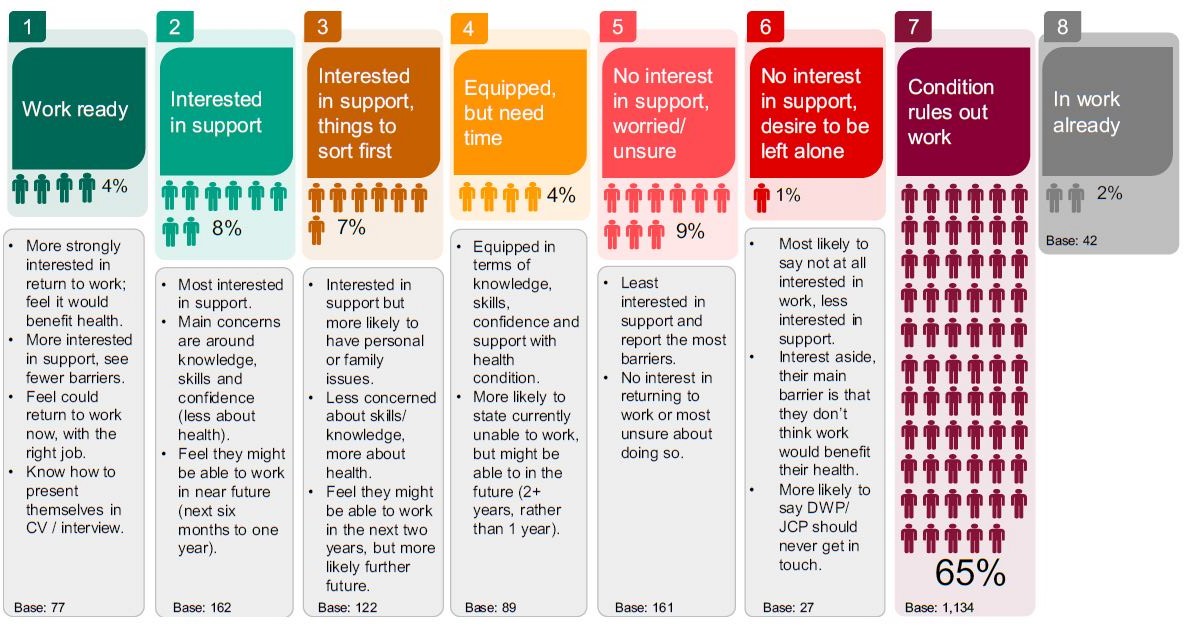At a glance
IFF brought together a range of qualitative and quantitative approaches to deliver an audience segmentation that enabled the Department for Work and Pensions (DWP) to work in a more targeted way with a group of benefit claimants, about which relatively little had previously been known.
About the client
The DWP is responsible for welfare, pensions and child maintenance policy. As the UK’s biggest public service department, it administers the State Pension and a range of working age, disability and ill health benefits to around 20 million claimants and customers.
Challenges and objectives
The DWP knew relatively little about individuals on the Support Group element of Employment and Support Allowance (ESA) (and the equivalent group of Universal Credit claimants). They wanted to understand to what extent they aspired to do work-related activities; and – if they did – what support they’d need to pursue these aspirations. The DWP also wanted to understand whether these individuals saw the DWP and Jobcentre Plus as credible providers of this sort of support; and how they felt about the DWP getting in touch with them to tell them about the support on offer.

Solution
IFF researchers brought together a range to techniques to deliver a solution. We started with 50 face-to-face in-depth interviews with the target audience across the UK, representing diverse disabilities, to help the DWP understand people’s lives holistically (exploring how they felt about paid or voluntary work as part of a bigger picture). We then ran six with individuals who aspired to work, to explore their feelings about this and the support they might need. Again, these included people with diverse disabilities including one group with deaf-blind people. To get beyond simplistic answers, we used extended focus groups so that we’d have time to explore their previous experiences of ‘positive’ support (that the DWP might seek to emulate). It also allowed us to introduce them to a Disability Employment Advisor from Jobcentre Plus, so that they could quiz them about what support DWP / JCP currently offers and decide whether any of it might be relevant to them.
The insight gleaned was used to design and deliver a survey of 2000 claimants in the target audience. The survey data was then used to place each of our claimants into one of eight segments, according to how they felt about entering work. We worked closely with the DWP throughout, reflecting on the findings of each stage and adapting our approach to the next, to ensure it delivered as much value as possible.

Impact
These segments gave the DWP an idea of how the target audience – individuals on the Support Group element of ESA (and the equivalent group of Universal Credit claimants) – falls into distinct groups in terms of their attitudes to entering work. Crucially, it also told the DWP the size of each segment, their demographic characteristics, attitudes and preferences regarding DWP communication; and what types of employment-related support might be most relevant for the DWP to tell them about. All this equipped the DWP to work with this group of individuals in a more targeted way. The study won the DWP’s award for the most influential piece of research of 2019, reflecting – in the words of the DWP – that it both covered new ground and communicated its findings in an impactful and persuasive manner.
The segmentation of the audience was summarised in the following graphic:



